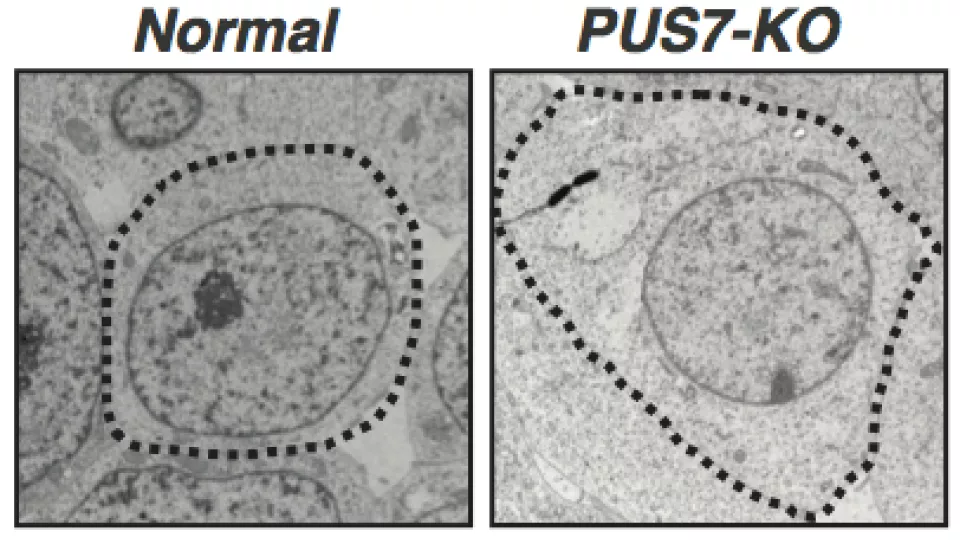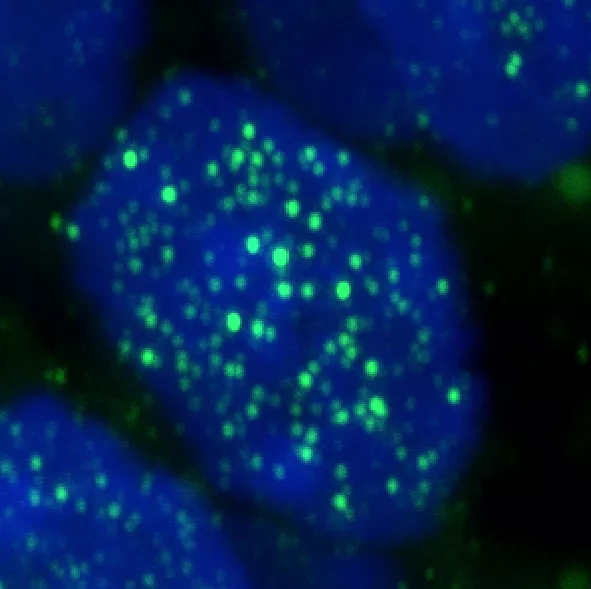“Our research is potentially important for life-threatening blood cancers characterised by dysfunctional stem cells – which are common in elderly people. High protein synthesis levels could represent an Achilles’ heel to eradicating cancer-initiating cells”, explains Cristian Bellodi, research team leader at Lund University’s Department of Laboratory Medicine.
Dr. Bellodi’s laboratory uncovered a new important function of pseudouridine, the most common type of RNA modification in human cells.
RNA is the essential molecule that decodes the genetic information in humans. It is emerging that the chemical structure of RNA molecules is extensively modified by specific enzymes normally present in our cells, which are commonly found to be altered in severe medical syndromes and various types of cancers. However, the contribution of RNA modifications in human development and disease is still mostly unexplored.
“Understanding the function of RNA modifications represents a new exciting research area. We still know very little about the mechanisms by which RNA molecules are modified, and whether this affects important biological processes in our cells. Therefore, it is essential that we learn how specific types of chemical modifications normally regulate RNA function in our cells, in order to understand how dysregulation of this process contributes to human disease, says Cristian Bellodi.
The team’s key discovery was that stem cells lacking an enzyme responsible for pseudouridine modification of RNA, known as PUS7, produce abnormal amounts of protein. This protein overload leads to unbalanced stem cell growth and dramatically blocks differentiation to blood cells.
They uncovered that the PUS7 enzyme is capable of introducing a pseudouridine modification into previously uncharacterized, non-coding-protein RNA molecules that they denoted as miniTOGs (mTOGs). The presence of pseudouridine “activates” mTOGs to strongly suppress the stem cell protein synthesis machinery. This ensures that the correct amount of proteins is made.
“Our work illustrates that this exquisite control mechanism - regulated by PUS7 and pseudouridine - is critical to adjusting the amount of proteins needed for human stem cells to grow and produce blood”, says Cristian Bellodi.
Since pseudouridine modifications may affect various RNA molecules in different types of normal and malignant cells, “our discoveries pave the way for future avenues of research aimed at exploring the role of pseudouridine in human development disease”, concludes Cristian Bellodi.
Publication: Pseudouridylation of tRNA-Derived Fragments Steers Translational Control in Stem Cells
Contact: Cristian Bellodi, PhD, Associate senior lecturer, Division of Molecular Hematology
Department of Laboratory Medicine, Lund Stem Cell Center, Lund University
cristian [dot] bellodi [at] med [dot] lu [dot] se
Facts about RNA, RNA modification and Pseudouridine:
- RNA:
RNA stands for ribonucleic acid. It is an important molecule consisting of long chains of nucleotides. A nucleotide contains a nitrogenous base, a ribose sugar, and a phosphate. RNA transfers and decodes the genetic information present in the DNA. RNA is vital for living beings. A very small percentage of cellular RNAs encode for proteins, whereas the vast majority is referred to as non-coding-protein RNA (ncRNAs). ncRNAs regulate how genetic information is decoded.
- RNA modification:
RNA modification occurs in all living organisms from bacteria to humans. RNA modification are introduced by specialized proteins (enzymes) which modify the chemical structure of nucleotides, RNA’s building blocks. RNA modifications can affect the activity, localization as well as stability of RNAs (coding and non-coding), and have been linked to human diseases. More than 100 different types of RNA modifications have been discovered so far but their function is mostly unknown.
- Pseudouridine:
Pseudouridine is by far the most common and abundant type of RNA modification in living organisms. Pseudouridine is a chemical variant of Uridine, one of the four nucleotides found in RNA being the others Adenosine, Guanosine and Cytosine. Pseudouridine plays an important role in ensuring that RNA molecules function correctly within our cells.
Source: Cristian Bellodi


